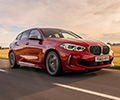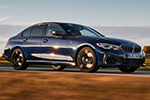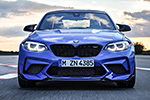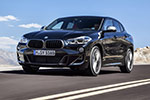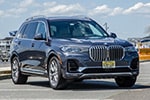BMW’s forward electric propulsion thinking is rooted in development vehicles such as the MINI E, and more recently, the Active E. The drivetrain found in the new i vehicles was developed using the 1 series platform, and the frankenstein electric 1 series was coined the Active E during its development and trial period.
With the release of the i3 nigh, BMW will soon be retiring the Active E concept study, but it’s great to see it once again on the show floor in NYC.
Enjoy the photo gallery of this significant car in BMW’s electric drive development.
“The BMW ActiveE is the BMW Group’s next systematic step towards an emission-free, mass-produced electric vehicle. Within the framework of project i, the BMW Group is carrying out research and development work on the realisation of electrically powered vehicles. The main focus is on the concept of a Megacity Vehicle (MCV) that meets the demands of a sustainable mobility solution for congested urban areas. For this purpose, the BMW Group is conducting field tests on an internationally unparalleled scale for the use of purely electrically driven vehicles in everyday road traffic.
Ongoing field tests in the USA and Europe involving more than 600 MINI E cars are already providing vital knowledge about the demands on future electrically powered production vehicles. Starting in 2011 in the USA, Europe and China, a test fleet of over 1000 BMW ActiveE vehicles, produced at the Leipzig plant, will provide further valuable insights into the everyday use of the vehicle. The findings will serve to deepen the knowledge already gained on the everyday use of electric vehicles and to learn more about customer requirements. The feedback from customers testing the MINI E and the BMW ActiveE will be fed directly into series production of the MCV, which the BMW Group will be launching under a new sub-brand in 2013.
With the BMW ActiveE, the BMW Group is extending field tests on electric mobility with a clear perspective of series-production capability and is intensifying research into electric mobility in everyday road traffic. For this reason, the drive components and energy storage units that will be used in the MCV are being tested on the BMW ActiveE at a pre-production stage.
The knowledge gained will be fed directly into series development of the MCV. With the BMW ActiveE, the future of individual mobility combining driving pleasure with CO2-free driving is one step closer.
On the way to sustainable, CO2-free mobility, the BMW Group now presents the next major milestone – the BMW ActiveE. Following the MINI E, the BMW ActiveE is the BMW Group’s second electric prototype. With a power output of 125 kW/170 bhp and maximum torque of 250 Nm, the car accelerates from 0 to 100 km/h in 9 seconds, demonstrating the dynamic and agile characteristics of a BMW, and as is typical of electric vehicles, straight from a standstill. At the same time, newly conceived lithium-ion energy storage units facilitate a vehicle range of around 160 kilometres (100 miles) in everyday operation.
Just like the MINI E, the BMW ActiveE is a conversion car, an electric vehicle based on the body shell of a vehicle with a combustion engine. The BMW ActiveE integrates all electric drive components such as energy storage unit, electric motor and power electronics in a vehicle body that was not originally intended for this purpose – and without compromising on space or comfort in the interior. Therefore, the BMW ActiveE is the BMW Group’s first electric vehicle to offer four fully-fledged seats and a 200-litre luggage compartment. This achievement by BMW developers is even more impressive in terms of the vehicle’s role during the initial testing phase.
The BMW ActiveE incorporates a pilot series version of the drive train and energy storage unit from the MCV with a partly identical, partly similar geometry in a vehicle from a different concept so that these components may undergo preliminary testing. However, except for a small scoop in the bonnet and a smaller boot, the exterior and the interior design is virtually the same as that of the series production vehicle.
Intelligent utilisation of construction space to ensure optimal functionality.
The BMW ActiveE is equipped with three large energy storage units that are positioned in the area where the engine block, power transmission to the rear wheels and the tank are to be found in a vehicle with a combustion engine.
The drive train of the BMW ActiveE – i.e. the electric motor with gear and power electronics – directly on the rear axle in order to save space. Thanks to this measure, the BMW ActiveE corresponds to a conventional
BMW 1 Series Coupe with regard to available interior space. Driver and front-seat passenger as well as passengers at the rear have the same amount of space at their disposal as in the BMW 1 Series Coupe and do not have to suffer any disadvantages at all with regard to headroom, legroom or shoulder room. This is due to the ideal positioning of the power electronics, which are located for functional reasons above the rear-axle mounted electric motor.
With a volume of 200 litres, the boot offers sufficient space for bottle crates or two 46-inch golf bags.”
[Source: BMW Group]





































